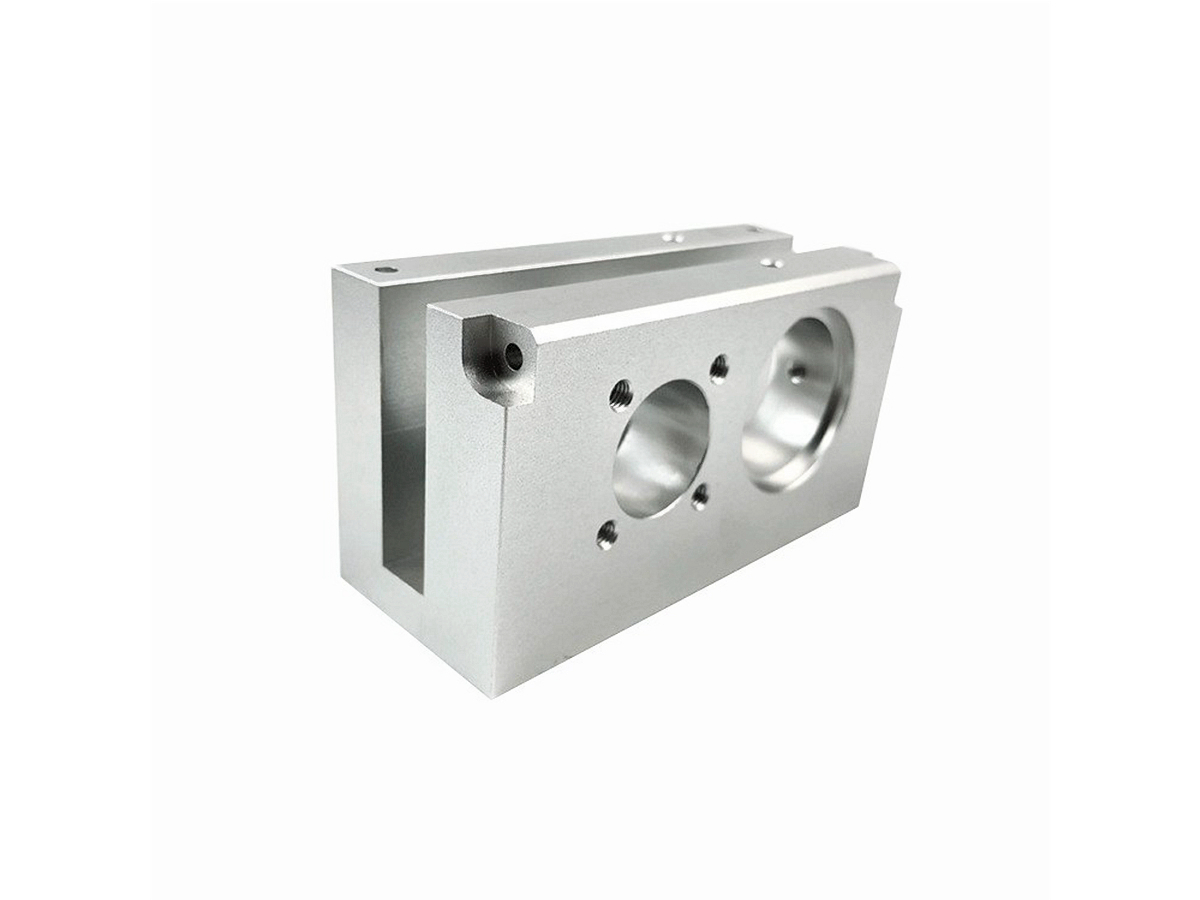Medical Device Manufacturing: The Role of Multi-Axis CNC in Creating Complex Titanium Parts
Precision Engineering for Life-Saving Innovations
Modern medical devices demand intricate geometries and biocompatible materials to meet stringent FDA and ISO 13485 standards. Multi-axis CNC machining services enable titanium components like spinal implants and surgical robots with ±0.005mm tolerances, which is critical for ensuring 99.9% surgical success rates. Titanium alloys dominate 70% of orthopedic implants due to their osseointegration capabilities and MRI compatibility.
The rise of patient-specific devices has driven demand for 5-axis simultaneous machining in medical-grade titanium. From Ti-6Al-4V ELI cranial plates to Ti-3Al-2.5V minimally invasive tools, multi-axis technology achieves complex undercuts and thin-wall structures (<0.5mm) unattainable through conventional manufacturing.
Material Selection: Titanium Alloys for Biomedical Applications
Material | Key Metrics | Medical Applications | Limitations |
|---|---|---|---|
860 MPa UTS, 10% elongation | Spinal fusion cages, dental implants | Requires electropolishing for Ra <0.2μm | |
690 MPa UTS, 20% elongation | Endoscopic tool shafts | Lower fatigue strength than Grade 5 | |
1,000 MPa UTS, 8% elongation | Trauma fixation plates | Complex heat treatment required | |
550 MPa UTS, 99.5% purity | Bone screws, pacemaker cases | Limited to non-load-bearing applications |
Material Selection Protocol
Load-Bearing Implants
Rationale: Ti-6Al-4V ELI meets ASTM F136 for orthopedic devices, with anodizing creating porous surfaces for bone ingrowth.
Flexible Instruments
Logic: Ti-3Al-2.5V achieves 20% elongation for articulating surgical tools, with laser marking ensuring UDI compliance.
Corrosion Resistance
Strategy: CP-Ti Grade 4 with passivation withstands 5,000+ autoclave cycles without degradation.
Multi-Axis CNC Process Optimization
Process | Technical Specifications | Medical Applications | Advantages |
|---|---|---|---|
0.003mm positional accuracy, 20,000 RPM | Custom orthopedic implants | 85° undercut capability | |
0.1mm end mills, 0.002mm stepover | Neural probe micro-channels | Achieves Ra 0.1μm surfaces | |
0.005mm diameter tolerance, L/D=20:1 | Hypodermic needle hubs | Single-pass machining of 0.3mm features | |
ISO 13485-compliant M1.6-M12 threads | Bone screw manufacturing | Maintains 4H/6H thread fit |
Process Strategy for Spinal Implants
Rough Machining: Carbide tools remove 75% of material from Ti-6Al-4V ELI blanks.
Stress Relief: 700°C vacuum annealing per ASTM F3001.
5-Axis Finishing: 2mm ball-end mills create 0.1mm lattice structures.
Surface Treatment: Electropolishing achieves Ra 0.15μm for bacterial resistance.
Surface Engineering: Biocompatibility & Performance
Treatment | Technical Parameters | Medical Benefits | Standards |
|---|---|---|---|
20-50μm thickness, 300-500 HV | Creates osteoconductive surfaces | ASTM F86 | |
0.1mm layer thickness, 99.98% density | Patient-specific porous structures | ISO 10993-1 | |
3μm thickness, 2,300 HV | Reduces surgical tool wear by 70% | ISO 5832-3 | |
50μm groove depth, Ra 2.5μm | Enhances instrument grip in wet conditions | IEC 60601-1 |
Coating Selection Logic
Load-Bearing Implants
Solution: HA (Hydroxyapatite) coating via plasma spray accelerates bone integration by 40%.
Reusable Instruments
Method: DLC (Diamond-Like Carbon) coatings enable 500+ sterilization cycles without performance loss.
Quality Control: Medical-Grade Validation
Stage | Critical Parameters | Methodology | Equipment | Standards |
|---|---|---|---|---|
Biocompatibility | ISO 10993-5 cytotoxicity ≤Grade 1 | Extractables analysis | GC-MS, ICP-OES | ISO 10993 series |
Dimensional Accuracy | 0.005mm profile tolerance | CT scanning | Nikon XT H 225 | ASME Y14.5 |
Surface Roughness | Ra ≤0.2μm, Rz ≤1.6μm | White light interferometry | Bruker ContourGT-K1 | ISO 4287 |
Traceability | UDI barcode readability @100% | Vision inspection system | Cognex In-Sight 8405 | FDA 21 CFR Part 11 |
Certifications:
ISO 13485:2016 with 100% batch traceability.
FDA 510(k) cleared manufacturing processes.
Industry Applications
Orthopedic Implants: Ti-6Al-4V ELI spinal cages with 5-axis lattice structures.
Surgical Robots: Ti-3Al-2.5V forceps jaws achieving 0.02mm repeatability.
Dental Guides: CP-Ti Grade 4 surgical templates with ±0.03mm accuracy.
Conclusion
Advanced multi-axis CNC machining services enable Class III medical devices with 99.95% first-pass yield rates. Integrated one-stop manufacturing reduces time-to-market by 45% while ensuring full FDA/ISO compliance.
FAQ
Why is Ti-6Al-4V ELI preferred for spinal implants?
How does multi-axis CNC improve surgical tool accuracy?
What surface treatments ensure FDA biocompatibility?
Can CNC machining achieve sub-micron medical tolerances?
How to validate implant osseointegration capabilities?

